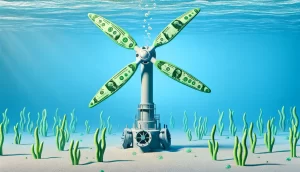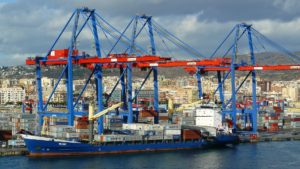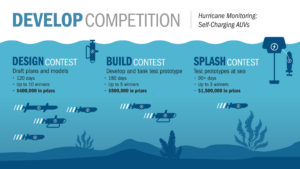Sooner or later all offshore energy harvesting technologies evolve from fixed-bottom to floating energy systems. Wind, wave, oil and gas, tidal, solar, and even nuclear have all undergone this progression which is characterized by two distinct phases.
For the purposes of this analysis, these two phases are defined as follows:
- The marinization phase, during which land-based systems are adapted for use in the ocean. It is the time from the first commercial demonstration of an energy technology up until a functioning stand-alone system is used in the marine environment.
- The decoupling phase, during which the offshore systems shift away from fixed-bottom foundations used onshore or in shallow water. It is the time from the first marinized system to the first floating commercial system.
Below we look into the evolutions of oil and gas, wind, solar, and tidal to commercial floating energy systems.
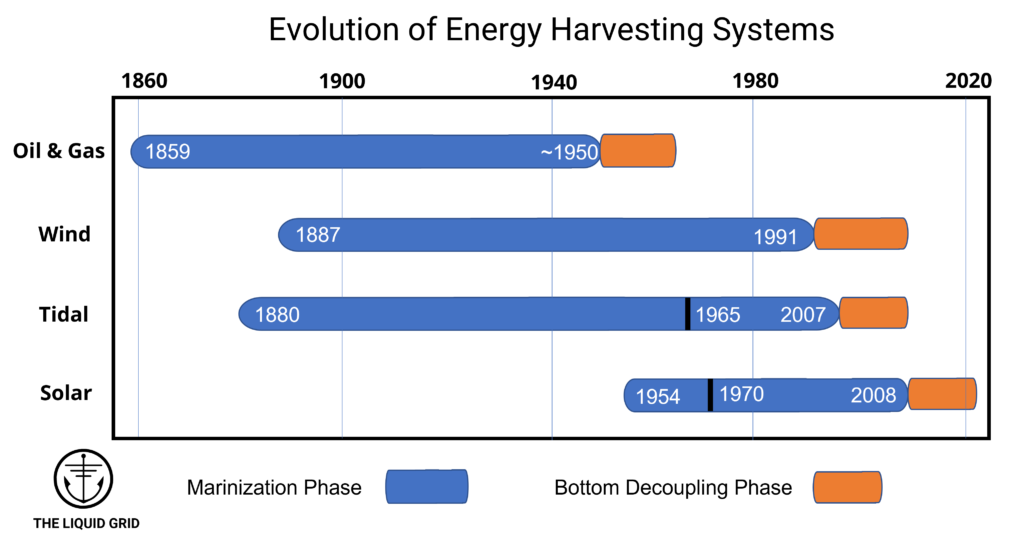
A Short history of Oil and Gas
The first onshore oil well was drilled in Texas soil in 1859 and 38 years later came the first ‘offshore’ wells in the coastal waters of California, drilled from piers. Around the same time, some enterprising companies developed wells in shallow lakes and swamps. However, it wasn’t until the decade after World War II, approximately 1945 to 1955, that we saw the emergence of true offshore oil and gas rigs using fixed-bottom foundations. These early drill rig designs were depth-limited to approximately 45 meters.
In the 1960s the first floating semi-submersible (semi) mobile offshore drilling units (MODU) and drillships were introduced. Instead of being rigidly connected to the seafloor, these systems used a set of anchors to keep them in one place. These early floating drilling units and drillships were able to reach depths of 90 meters; by the 1970s that depth limit was pushed to past 300 meters; and by the 1980s it was more than 900 meters. Today, a modern drillship can reach depths of more than 3,000 meters and hold its position in a precise location using azimuthing thrusters and satellite positioning, a technique known as dynamic positioning.
It took between 38 to 86 years to marinize onshore oil and gas drilling systems, and then 15 years to decouple them from the bottom. In total, it took approximately 101 years to evolve to floating energy systems.
A Short History of Offshore Wind
Wind turbines have been around for centuries, but the first wind turbine that produced electricity was erected in 1887, about 28 years after the first onshore oil well. Over the next several decades, hundreds of wind turbines were erected throughout the world but there was never significant growth of the wind sector. In fact, it wasn’t until 1980, almost a hundred years later, that the United States welcomed the world’s first onshore wind farm. It was another eleven years until the world saw the first offshore wind farm installed off the coast of Vindeby, Denmark in depths of about 4 meters. Now in 2022, the Seagreen offshore wind farm will be Scotland’s largest wind farm to date, and the world’s deepest fixed-bottom wind farm in depths of 59 meters.
Beginning in 2007 to 2009, major offshore wind developers began investigating floating offshore wind turbines as alternatives to fixed-bottom wind turbines. The world’s first floating offshore wind turbine was installed in 2007 off the coast of the Netherlands in a depth of 113 meters. Shortly thereafter, Equinor funded the Hywind demonstration of a larger floating wind turbine in 2009 in 220 meters of water. A handful of demonstrations followed after these first projects. Today there are three floating wind farms that were commissioned in 2017, 2020, and 2021 respectively and another on the way.
It took approximately 104 years to marinize wind turbines, and then 16 years to decouple them from the bottom with the introduction of the first floating offshore wind turbine in 2007. In total, it took 120 years to cover both phases.
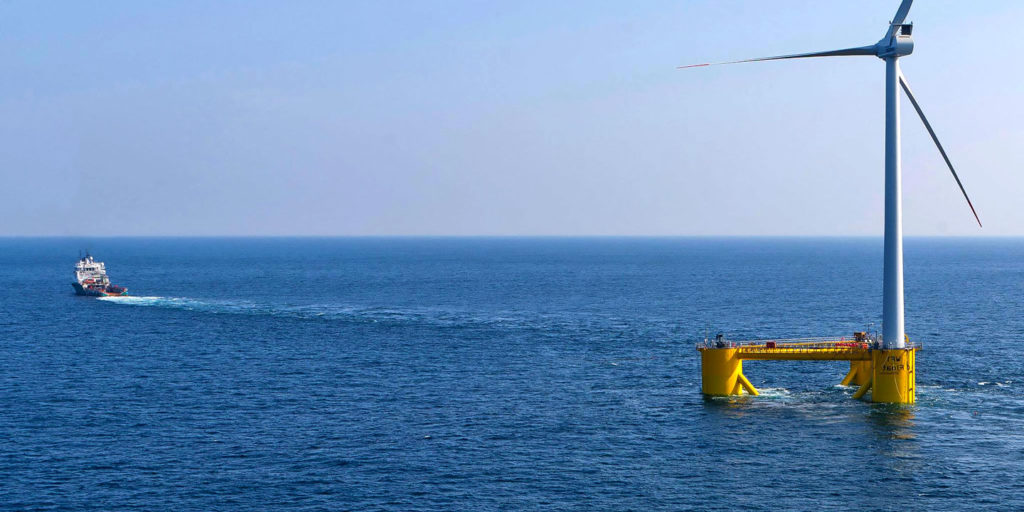
A Short History of Tidal
Tidal energy has reportedly been used for centuries as mechanical power for mills, but it was only relatively recently that tidal energy was used to produce electricity. While there are numerous patents and studies from the late 19th and early 20th century, I can find no evidence of a tidal power plant producing electricity during this time. Instead, I’m defaulting to the first hydropower turbine used to produce electricity which was installed in 1880 in the Grand River near Grand Rapids, Michigan. The concept is not all that different from a tidal turbine, but it operates in a freshwater river with constant unidirectional flow as opposed to saltwater with bidirectional flow.
The first time tidal energy was used to produce electrical power was in 1965 when a 720-meter tidal barrage was built in La Rance, France. For the unacquainted, a tidal barrage is a fixed-bottom foundation design that resembles a dam, but instead of spanning a river, it’s in a marine estuary that experiences the ebb and flow of the tides. This isn’t really a fair demarcation point for our evolution analysis however, because it would be virtually impossible to create a floating tidal barrage. So we must look at a different type of tidal system, referred to as in-stream tidal turbines.
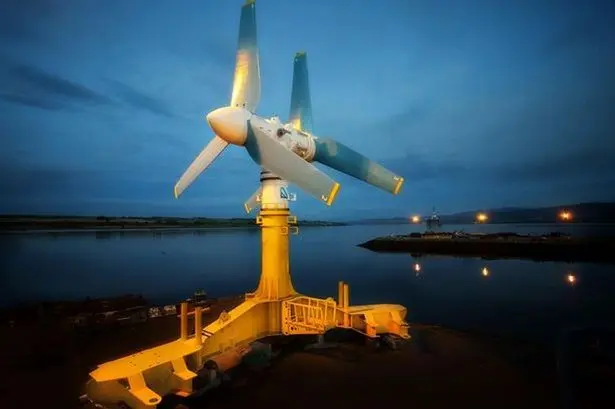
Today, there are dozens of different in-stream designs, but it’s difficult to track down the history of each. The earliest example of a fixed-bottom in-stream tidal turbine that I could find is this project from 1994. It seems that around 2007 to 2010, several tidal energy technology developers like Oceanflow Energy, Orbital Marine Power, and Magallanes Renovables started working on floating tidal turbine designs, some of which have scaled to multi-megawatt machines today.
It took approximately 85 to 114 years to marinize hydroelectric turbines, and then another 13 years to decouple them from the bottom with the introduction of the first floating in-stream tidal turbines in 2007. In total, from the first hydropower turbine to the first floating tidal turbine took approximately 127 years.
A Short History of Floating Solar
The photovoltaic effect, the basis for solar energy conversion, was first demonstrated in the mid 19th century, but it wasn’t until 1954 that a solar photovoltaic (PV) cell was produced that could deliver enough electrical energy to power electronics. In the 1960s solar PV gained traction in the space industry as an alternative power source for satellites, and by the 1970s it was used to power navigational lights and horns on offshore oil rigs and buoys. During the 1970s, larger arrays of PV panels were assembled into arrays for onshore applications.
While solar PV saw relatively quick adoption for niche applications in remote marine environments, these were typically single PV panels or tiny arrays, enough to power only a few low-power electronics. The foundations and supporting structures (buoys, rigs, lighthouses) were not designed exclusively for harvesting solar energy; solar PV was a means to an end as opposed to an end unto itself that justified the structure.
The world’s first onshore utility-scale solar PV array came online in 1983 in San Luis Obispo County, CA. I can’t find any mention anywhere of a fixed-bottom solar array over the ocean, but in 2008 floating solar PV for lakes, reservoirs, canals, and other inland water bodies emerged. Although it was solar floating on water, it was not technically ‘offshore’ in the marine environment. It wasn’t until 2021 that the first utility-scale floating offshore solar PV array arrived.
It took between 15 and 54 years to marinize solar PV, and 13 years to transition to floating offshore arrays. In total, from the first solar cell to the first floating offshore solar PV array for the grid, took approximately 67 years, almost half as long as wind and tidal.
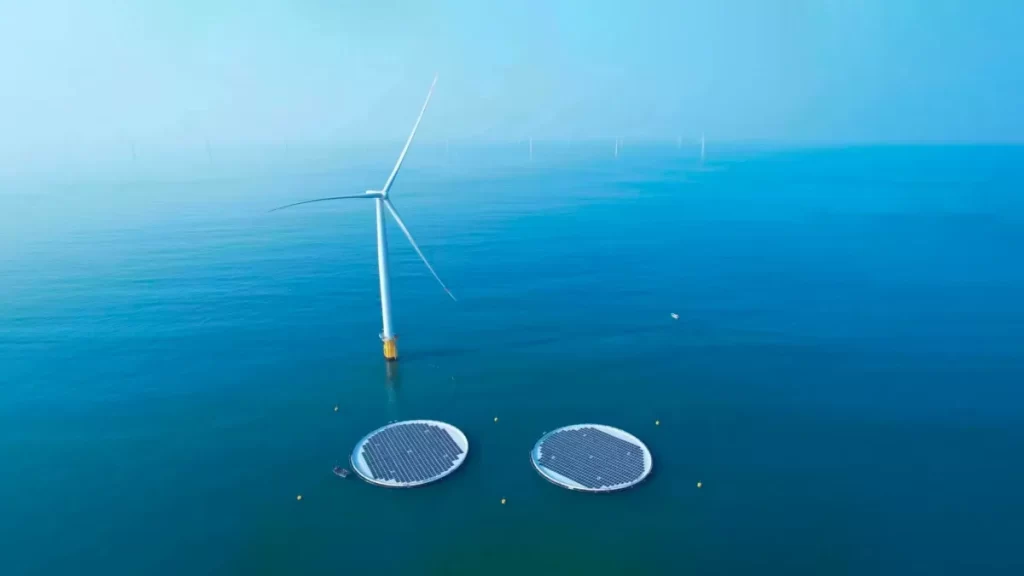
Why Go Floating?
Floating energy designs are common across these technologies for several reasons. In the case of oil and gas, wind, and solar, such designs need to decouple from fixed-bottom foundations to allow expansion into deeper water where there were more wells to drill, more wind, and plentiful surface area that receives sunshine, respectively. Fixed-bottom designs are all depth limited, which is a severe constraint in the ocean where the average depth is 3,700 meters. For example, almost 70% of offshore wind energy in U.S. waters and 80% in European waters, is too deep for traditional fixed-bottom turbines. There are limits to growth however, building pipelines or power export cables way offshore can become prohibitively expensive.
Opening up new resource potential in deep waters was not the main driving factor for floating tidal turbines. Ideal sites for tidal energy are often found in coastal locations that produce high current velocities due to bottlenecks formed by natural features, which makes ideal locations inherently less common.
Therefore the main benefits of shifting to floating tidal systems wasn’t to open up access to new resources that were previously inaccessible due to water depth, it was to drive down installation and operational costs. Unlike fixed-bottom tidal turbines, floating tidal turbines can be constructed in a shipyard and float-towed to their installation site without any expensive specialized installation vessels. In addition, a floating tidal system is easier to access for maintenance or inspections since all of the electrical equipment is at sea level on a floating platform that can be accessed with a small boat.
Considering these four energy systems as examples, the duration of the marinization phase differs, but the decoupling phase consistently took approximately 15 years. It’s interesting that these durations so closely align, even across decades that saw significant technological advancement. Perhaps this is the standard cycle time for any new offshore energy system design? Regardless of the phases and durations of each, it’s clear that floating energy systems are a natural part of the evolution of any energy harvesting system. The future is floating.

